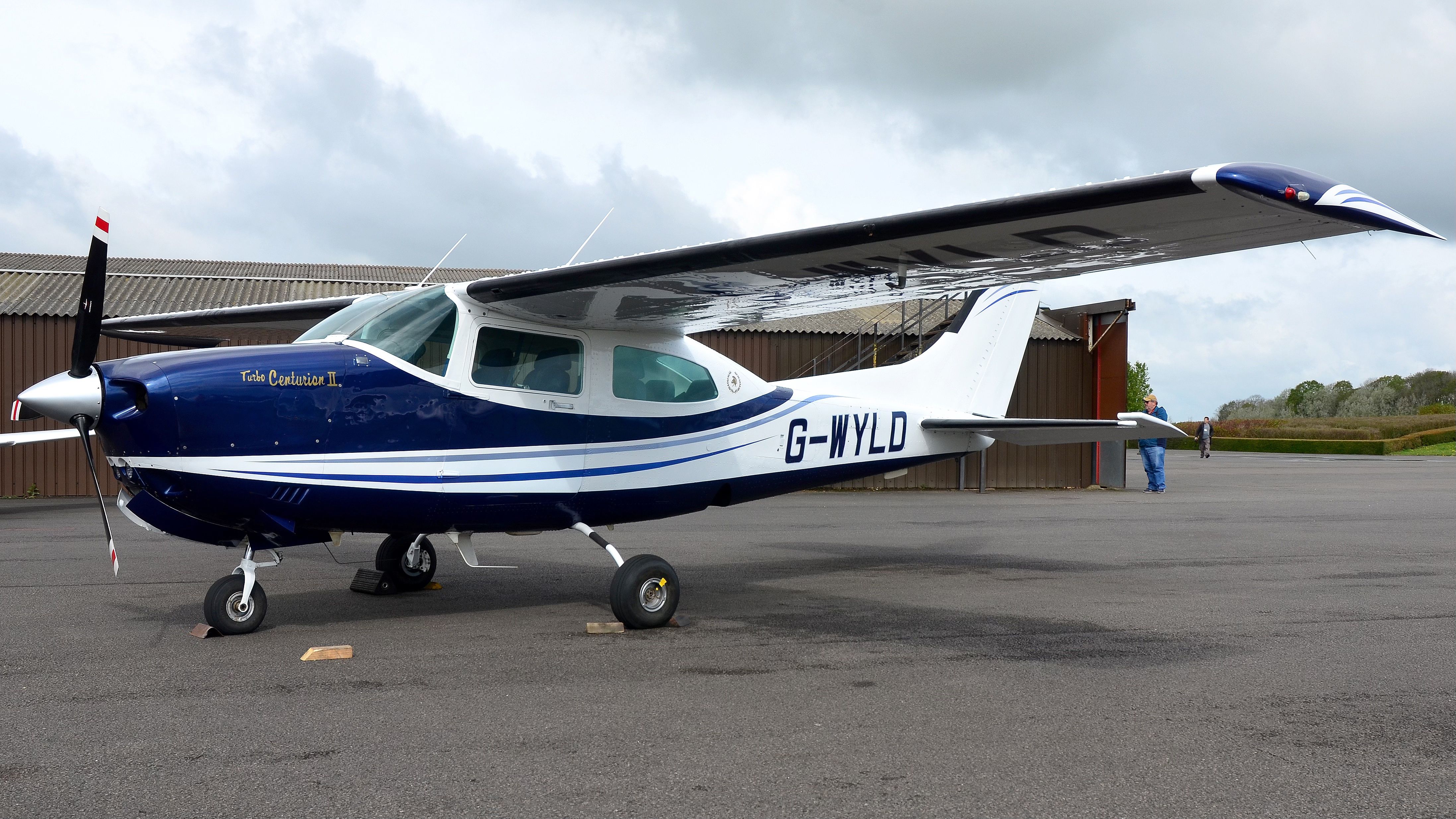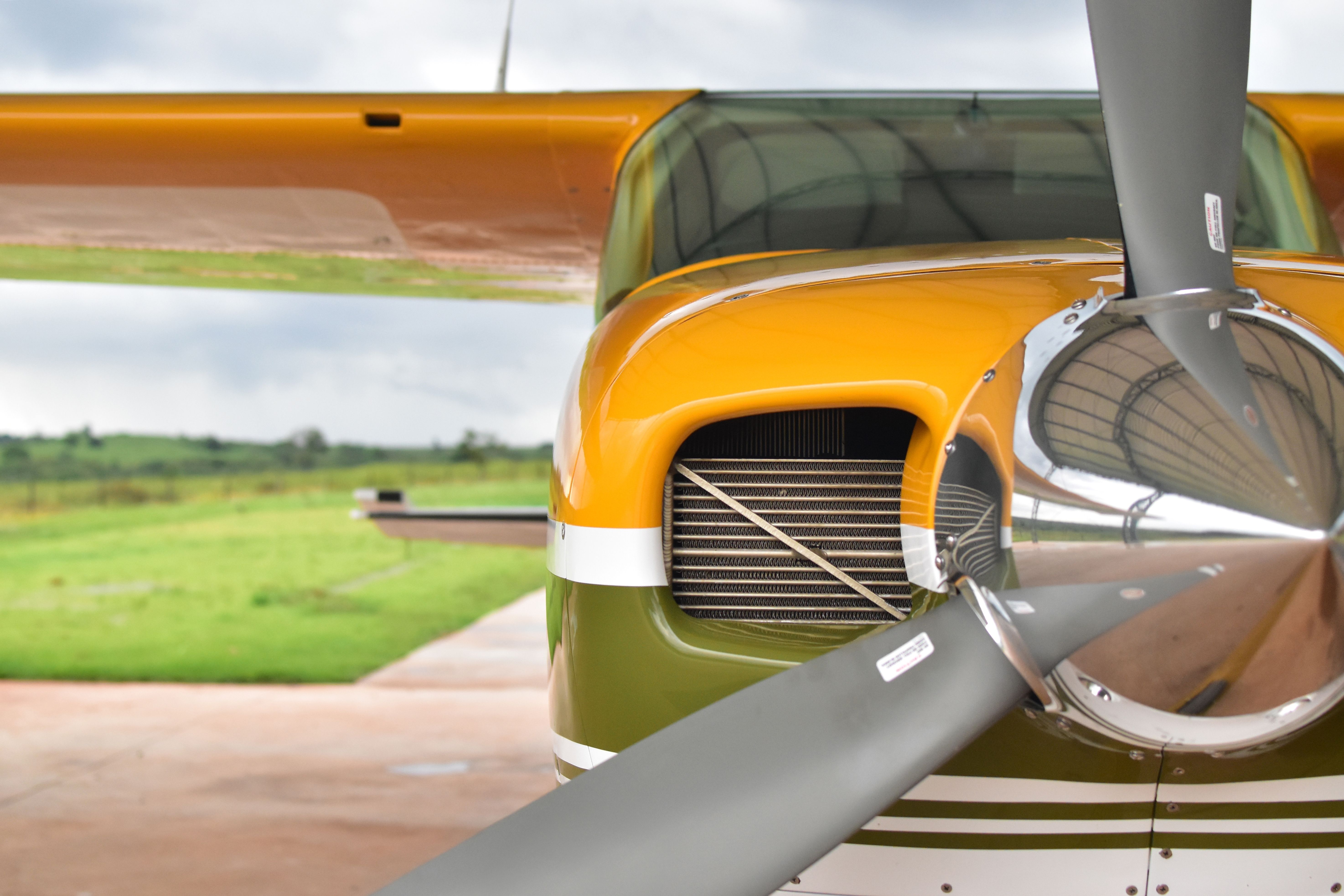
Summary
- The Cessna 210, or Centurion, is known for its speed, with variants reaching over 200 knots.
- The Centurion remains available in the second-hand market since production stopped in 1986.
- Depending on upgrades, prices for a Cessna 210 in the pre-owned market can range from $74,000 to $1.9M.
Most readers will know the nickname “King of the Skies.” To most, it refers to Airbus’s double-decker superjumbo. It was initially coined for an American piston-powered aircraft: the Cessna 210. The official marketing name for this airplane was the Centurion, which first flew in 1957. The airframe was based around the Cessna 182B Skylane and differed mostly thanks to the retractable landing gear.
The “King” remained in production for three decades until the last 210 rolled out of Cessna’s factory in 1986. And while it wasn’t one of Textron Aviation’s longest-produced models. Today, let’s examine which feature made it most popular. The other technical specifications of the Centurion, and finally, we will discuss how much it costs.
The Centurion: A king of speed.
Photo: Adam Loader | Shutterstock
This Cessna 210 is piston-powered and remains a high performer despite its age. This is because it is an ideal product for pilots with large families who like bringing them along on sporty rides. The 210 is based on another aircraft, the Skylane.
According to AOPA, the first-generation models built in the late 50s to mid-60s inherited its 470-cubic-inch Continental engine, rated at 260 horsepower. The same article explains that the only notable difference between those first-generation units and the C182B regarding propulsion was that the “King of the Skies” has a fuel-injected variant. Only later, In 1964, an IO-520 with 285 hp replaced the IO-470. In 1966, a turbocharged version came online.
According to planeandpilotmag, a turbo typically contributes at least another 10,000 feet of vertical altitude to an airplane’s flight envelope to a maximum of 23,000 to 25,000 feet, whereas a “normal” engine would be limited to 13 to 15,000ft. Technically, what differentiates a turbocharged engine is that it essentially compresses the air intake, giving more power to the aircraft.
The 210s got the name Centurion when the turbo version became available. In 1967, a year after the engine upgrades, the wings became strutless, improving the aerodynamics and allowing the speed to be bumped up again. From the late 50s until the 70s, the turbocharged version’s top speed went from 195mph to 200mph. But by far, the best-performing version was the pressurized version, which could avoid most lousy weather and reach a top speed of 230mph.
The Centurion: some other key specs.
Photo: Serginho Villela | Shutterstock
Besides speed, a key purchasing factor for owners in the model’s nearly six decades, the Centurion is also ideal for large households, as mentioned previously. It can comfortably seat up to six occupants, including the pilots, so two people are in the front and two on the bench at the rear. It, therefore, has a capacity similar to that of large SUVs.
If you want to see what it looks like on the inside, look at this YouTube video below.
According to AOPA, this Cessna also has a small cargo hold, which, depending on the variant, can carry different maximum weights of bags.
|
Centurion |
Centurion 210L |
Centurion 210R |
|
|---|---|---|---|
|
Hold capacity |
120lbs |
120lbs |
240lbs |
How much does it cost today?
Unfortunately, Cessna has no longer produced The King of the Skies since 1986. If you wish to get your hands on one of these unique aircraft, you must head to the second-hand market. Several websites specialize in the pre-owned market, such as Controller.com or trade-a-plane.com. A quick look at either of these suggests that a Cessna 210 can start at $74,000 for one of the first generation models to as high as 1,9M$ for 1980s models, which have undergone various avionics upgrades.
This is only the upfront purchase cost; prospective owners should consider maintenance and other variable costs. According to Investopedia, small aircraft must undergo annual inspections like their bigger counterparts. Depending on the age of the aircraft, it can range from $600 to $1,200 for aircraft with fixed landing gear, while specialized planes with retractable landing gear, like the Cessna 210, may cost slightly more.
What other aircraft does Cessna offer today?
The Wichita-based OEM saw its first plane take off almost a century ago, in 1927. Today, the company has diversified its offerings, ranging from the famous Skyhawk, on which many pilots still train, to an offering of ultra-modern and super-midsize private jets. It even develops a successor to Citation Excel. This new jet was launched during EBACE last May and is dubbed the Ascend. It is due to begin deliveries in 2025.
The Textron Aviation company has set up to become a staple in aviation, bringing its expertise to almost all sectors of the fixed-wing aviation industry. If you are an aviation enthusiast, you must have seen or been on one of their products.
Bottom line
The Cessna 210, which has the marketing name Centurion, has earned the reputation of being fast, with some variants reaching a speed of over 200 knots. It even earned the nickname King of the Skies. And even though it has not been produced in almost forty years, it is still available to purchase second-hand. It will hopefully still grace airfields worldwide for decades to come.
What do you think of the Cessna 210 Centurion? What Cessna have you been able to fly on, and which is your favorite? Let us know in the comments below.
Discover more from reviewer4you.com
Subscribe to get the latest posts to your email.







